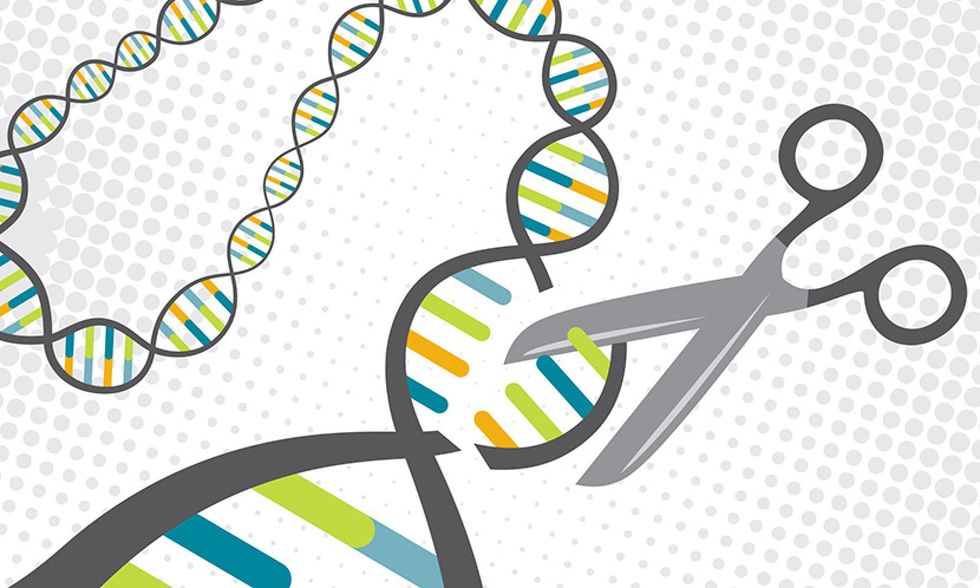CRISPR is a gene editing tool that is spreading throughout the science world like a wildfire. It is fast, cheap, and more accurate than all previous techniques used to edit DNA and has a wide range of potential application. CRISPR is a technology recently discovered that allows for geneticists to edit your DNA by altering, adding or moving parts of the DNA sequence. It is currently the simplest, most precise and affordable method of Genetic manipulation, and therefore creating quite a buzz in the biology world.
So how does it work?
CRISPR contains an enzyme called Cas9 and a piece of guide RNA (gRNA). The Cas9 acts as "molecular scissors" and can cut the two strands of DNA so that genes can then be added or removed. The gRNA is a small piece of pre-designed RNA sequence which guides the Cas9 enzyme to the right part of the genome. This makes sure that the Cas9 will cut at the right point in the genome.
How was it developed?
Certain kinds of bacteria have a similar built-in gene editing system that they use to respond to pathogens, very much similar to the human immune system. Using CRISPR, the bacteria snip out parts of the virus DNA and keeps it to help recognize and defend against it every time it attacks. Scientists discovered and then developed the systems so that it could be used in other organisms, such as mice and humans.
Application/Implications?
CRISPR has huge potential for being used as a tool for treating a wide range of conditions that have a genetic component, such as Cancer or high cholesterol. Previous proposals involved editing germline cells (sex cells). Because of the fact that any changes made to the reproductive cells will be passed down for generations, it has many ethical implications. In the UK and many other countries, editing germline cells is actually illegal. However, CRISPR is much less controversial and has already been used to treat human disease in a small number of life-threatening cases.
The future of CRISPR?
It will most likely still be at least a couple years before CRISPR is developed enough to be used routinely in humans. At the moment, most of the research goes into its use in animals or isolated human cells, although the final goal will be to use it regularly in humans. There is also much work going towards eliminating 'off-target' effects, where the CRISPR system cuts a different gene than the one that was intended.

















